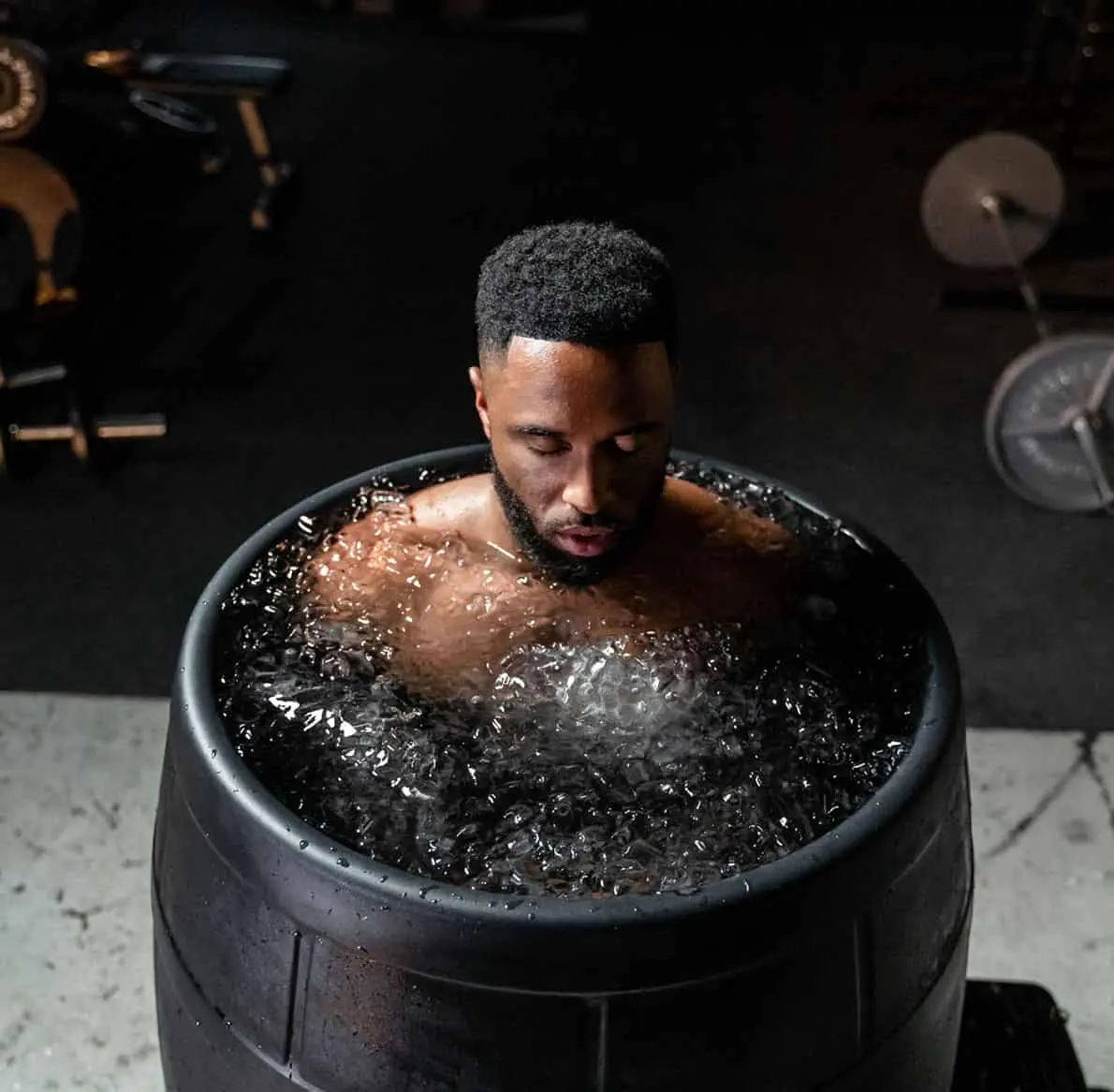The Benefits of Incorporating Ice Baths into Your Daily Fitness Routine
Whether you're an athlete pushing your body to the limits or a non-athlete looking to improve recovery and well-being, the power of an ice bath can be transformative. In this blog, we will explore the benefits of taking an ice bath in your daily fitness routine, how it benefits both athletes and non-athletes, and simple steps to incorporate cold baths into your life.
What is an Ice Bath?
An ice bath, also known as cold water immersion (CWI), is a recovery practice where individuals submerge their body in cold water, typically ranging from 50°F (10°C) to 59°F (15°C), for a short period. The duration of an ice bath can vary from 10 to 15 minutes, depending on personal tolerance and specific recovery goals.
The Science Behind Ice Baths
Cold water immersion works by constricting blood vessels and decreasing metabolic activity, which reduces swelling and tissue breakdown. Once you step out of the cold water, the tissue warms up, causing a rapid return of blood, helping to flush out metabolic waste. The cold also numbs the muscles, providing immediate pain relief.
Benefits of Ice Baths
1. Reduces Muscle Soreness
One of the most popular reasons people take ice baths is to reduce muscle soreness after a tough workout. Known as delayed onset muscle soreness (DOMS), this condition often occurs after intense physical activity, causing discomfort for 24-48 hours. Cold water immersion reduces inflammation and helps minimize DOMS by decreasing blood flow to the muscles.
2. Improves Recovery Time
For athletes and fitness enthusiasts, reducing recovery time is key to maintaining consistent training. An ice bath after strenuous physical activity can help muscles recover more quickly, allowing you to return to training sooner with less fatigue. The cold temperature slows down cellular processes, including inflammation, providing relief from stiffness and allowing the body to repair itself faster.
3. Boosts Circulation
The alternating constriction and dilation of blood vessels during and after an ice bath enhance circulation. Improved blood flow means that nutrients and oxygen reach muscles more efficiently, accelerating the recovery process. Enhanced circulation also aids in waste removal, preventing the buildup of lactic acid, which is often responsible for muscle cramps and soreness.
4. Enhances Mental Toughness
Ice baths are not just a physical recovery tool—they also help build mental resilience. Stepping into freezing water challenges both the mind and body, testing your ability to tolerate discomfort. Regular exposure to cold water can teach you to stay calm in stressful situations, and this mental strength can translate into other areas of life, whether it's in athletic performance or overcoming personal challenges.
5. Reduces Inflammation
Inflammation is a natural response to exercise, particularly high-intensity training. While some inflammation is good for growth and adaptation, too much can hinder performance and lead to injury. Cold therapy through ice baths helps lower inflammation by reducing tissue temperature and limiting the inflammatory response. This can be especially helpful for athletes who need to manage chronic inflammation.
6. Promotes Better Sleep
Athletes and non-athletes alike often struggle with achieving restful sleep, especially after intense physical activity. The calming effect of cold water immersion on the nervous system can promote better sleep by reducing muscle tension and lowering heart rate. Cold therapy is known to activate the parasympathetic nervous system, helping you feel more relaxed and ready for rest.
7. Boosts Immune Function
While it may sound counterintuitive, regular exposure to cold water can actually strengthen your immune system. Research suggests that cold water immersion stimulates the production of white blood cells, which are crucial for fighting infections. Over time, this could help your body fend off illnesses more effectively, making you more resilient to common colds and other minor health issues.
8. Enhances Fat Loss
Exposure to cold temperatures activates brown fat in the body, which is a type of fat that burns calories to generate heat. Regular cold exposure, such as ice baths, can boost metabolism and promote fat loss by stimulating the body to burn more energy, even at rest. This effect, combined with regular exercise, can lead to a more effective weight loss journey.
Ice Baths for Athletes

Athletes use ice baths as a crucial component of their recovery routine, particularly after high-intensity training sessions or competitions. Here are some specific benefits for athletes:
1. Accelerates Muscle Recovery
For athletes, quick recovery is essential for consistent performance. Cold water immersion reduces muscle fatigue and prevents the buildup of lactic acid, allowing athletes to train harder and more frequently.
2. Reduces Swelling and Inflammation
Athletes, especially those in contact sports, often experience injuries and inflammation. An ice bath can help reduce swelling and inflammation, which aids in faster recovery from minor injuries.
3. Prevents Overtraining
By helping athletes recover more quickly, ice baths can prevent the negative effects of overtraining, such as burnout and injury. This allows athletes to maintain a higher training volume without compromising their health.
Ice Baths for Non-Athletes

You don't have to be a professional athlete to benefit from cold water immersion. Whether you exercise casually or live a sedentary lifestyle, ice baths offer advantages for everyone:
1. Eases Muscle Tension
For non-athletes who experience muscle tension due to work, stress, or everyday activities, an ice bath can relieve tension and reduce aches and pains.
2. Improves Mood and Energy Levels
Cold water exposure triggers the release of endorphins, the body's natural mood enhancers. Taking a regular ice bath can leave you feeling more energized and positive throughout the day.
3. Promotes General Well-Being
For non-athletes, ice baths can help improve circulation, boost the immune system, and even support weight loss efforts, making it a powerful wellness tool.
How to Take an Ice Bath: A Simple Guide
Taking an ice bath doesn't have to be complicated. Here's a step-by-step guide to incorporating cold water immersion into your routine.
Step 1: Prepare Your Tub
Fill your bathtub with cold water first. Add enough water so that when you sit in the tub, it covers most of your body. You can start with just cold water, and as you get used to the sensation, add ice cubes or ice packs to lower the temperature.
Step 2: Check the Water Temperature
For an effective ice bath, the water temperature should be between 50°F (10°C) and 59°F (15°C). If you're new to ice baths, start with slightly warmer water and gradually reduce the temperature over time as your tolerance builds.
Step 3: Gradual Entry
Ease yourself into the tub slowly. Start by sitting in the cold water and gradually lowering your body until your entire lower half is submerged. If you're comfortable, you can eventually submerge your entire body, including your upper body and shoulders.
Step 4: Stay Relaxed
While sitting in the cold water, focus on your breathing. Try to remain calm and breathe deeply, as this will help your body adjust to the cold. Avoid sudden movements, as they can make the cold more intense.
Step 5: Timing is Key
A typical ice bath should last anywhere between 10 and 15 minutes. If you're new to cold water immersion, you can start with 5 minutes and work your way up over time. Remember, consistency is key—regular ice baths will lead to better results.
Step 6: Post-Ice Bath Routine
After your ice bath, gently pat your skin dry and put on warm clothing. Avoid hot showers immediately after an ice bath, as they can negate the benefits of the cold exposure. Instead, allow your body to naturally warm up over the next 30-60 minutes.
When to Avoid Ice Baths
While ice baths can offer many benefits, there are certain circumstances where cold water immersion may not be ideal:
- Cold Sensitivity: If you have a medical condition that makes you sensitive to cold or if you experience pain during cold exposure, consult a healthcare provider before trying ice baths.
- Cardiovascular Issues: People with heart conditions or blood pressure problems should avoid ice baths without consulting a doctor, as the cold can put additional stress on the cardiovascular system.
- Injury Recovery: Ice baths can be beneficial for minor injuries, but for more serious injuries like fractures or ligament tears, always follow a doctor's advice.
Conclusion
Incorporating ice baths into your daily fitness routine can bring a host of benefits for both athletes and non-athletes. From reducing muscle soreness and inflammation to improving circulation and boosting mental toughness, the power of cold water immersion is undeniable. By following the simple steps outlined above, you can safely and effectively make ice baths a part of your recovery regimen and enhance your overall health and well-being.
Regular use of ice baths can not only improve physical recovery but also elevate your mood, immune function, and fat loss, making them a valuable tool for anyone looking to enhance their fitness routine or overall health.
Guides
- Benefits of Protein
- 7 Healthy Eating Habits
- 7 Most Effective Exercises At Home
- Home Workout Plan Without Equipment
- Top 10 Biggest Nutrition Myths
- How To Get Flexible Body?
- Weight Loss VS Fat Loss
- What is Keto Diet?
- What Is Minerals?
- What Is Digital Marketing ?
- Best Free Tools For Beginner You Tubers
- Best Teas For Weight Loss & Fat Burning
- Green Tea: Health Benefits And Side Effects
- Yoga for Weight Loss and Fat Burning
- What Is Type-2 Diabetes?
- How To Write Eye-Grabbing Resume
- The Ultimate Guide To Prepare For An Interview
- 10 Best Health Benefits Of Eating Mango
- healthy eating habits for kids
- 10 tips for starting your Fitness Transformation
- 10 Reasons Why People Hate Gym & How to Overcome Them
- Fuel Your Passion For Nutrition: Explore The Power Of A Nutrition Course
- Shed Pounds with Ease: Vegetarian Diet Plan for Weight Loss Revealed!
- Anabolic steroids: Types, Uses, and Side Effects
- Find Your Path to Success: Choosing the Right Fitness Certification Program in India
- learn gym trainer course offline at surat with best faculties
- Learn about Body Composition and How it Affects Your Health
- Nutrition course online with affordable fees
- Online Dietitian Plan vs In-Person Consultation: Which is Right for You?
- The Importance Of Fitness Education In Today's World


About Dr.Gautam Jani
Dr. Gautam is a civil engineer. By passion he is a dietitian and had started practising it in the year 2016. He is the founder of fitnesswithgomzi firm established in 2018. He has achieved many certificate from ACSM, ISSA and VLCC.

